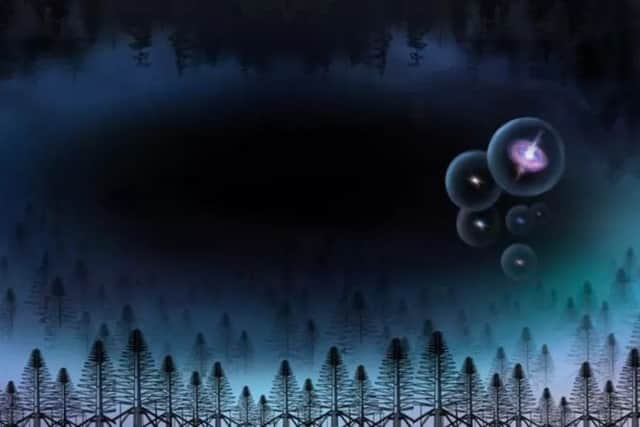World's largest radio telescope could detect secrets of dark matter and the universe's first galaxies
This article contains affiliate links. We may earn a small commission on items purchased through this article, but that does not affect our editorial judgement.
and live on Freeview channel 276
The world's largest radio telescope is being built to help revolutionise the current understanding of the universe.
Researchers from the Northeastern University in China and the National Astronomical Observatories of the Chinese Academy of Sciences (NAOC) have theorised that using the telescope, they should be able to get a better understanding of dark matter, and the early formation of galaxies.
Advertisement
Hide AdAdvertisement
Hide AdWhat is the world's largest radio telescope?
The Square Kilometre Array (SKA) is being split between two frequencies, with one half being built in Australia (low frequency) and the other half being built in South Africa (mid-frequency).
The headquarters are located at the Joderell Bank Observatory in the UK.
The radio is projected to be completed in 2027 and will collect data over an area of 1 km. The instrument will be 50 times more sensitive than any other instrument and should be able to survey the sky more than ten thousand times faster than before.


What do scientists hope to do?
With the new instrument, which is still under construction, the researchers hope to create a novel new probe to look into the mysteries of dark matter, and how it influences the evolution of the universe during the cosmic dark ages.
Advertisement
Hide AdAdvertisement
Hide AdDark matter has been theorised to make up around 85% of matter in the universe and played a huge role in the formation of the early universe.
However, there is no way to accurately measure its nature as dark matter does not interact with light.
Now, the researchers have devised a plan to investigate the particles that make up dark matter by studying small-scale structures.
Atomic hydrogen gas in and around the small-scale structures that existed during the cosmic dawn, which ended around one billion years after the Big Bang, creates characteristic absorption lines at 21 centimetres, in the radio range of the electromagnetic spectrum.
Advertisement
Hide AdAdvertisement
Hide AdThese are known as the 21-cm forest, which has been proposed as a potential probe of gas temperature and dark matter during cosmic dawn for over 20 years.
However, with the discovery of more high-redshift radio-loud quasars, the researchers could be able to detect this 21-com forest.
Researchers behind the new study think measuring the distribution of energy of the 21-cm forest, or its "power spectrum," will make it a plausible probe to both, measure dark matter properties, and the thermal history of the universe.
This could help distinguish between a cold dark matter model of the universe, one with massive dark matter particles moving slowly in comparison to the speed of light, and a hot dark matter model, with lighter and more fast-moving dark matter particles.
Advertisement
Hide AdAdvertisement
Hide Ad"By measuring the one-dimensional power spectrum of the 21-cm forest, we can not only make the probe actually feasible by increasing the sensitivity but also provide a way to distinguish the effects of warm dark matter models and early heating process," said National Astronomical Observatories researcher Yidong Xu, corresponding author of the new study. "We will be able to kill two birds with one stone!"
The team’s research was presented in the July 6 edition of the journal Nature Astronomy.
Comment Guidelines
National World encourages reader discussion on our stories. User feedback, insights and back-and-forth exchanges add a rich layer of context to reporting. Please review our Community Guidelines before commenting.
